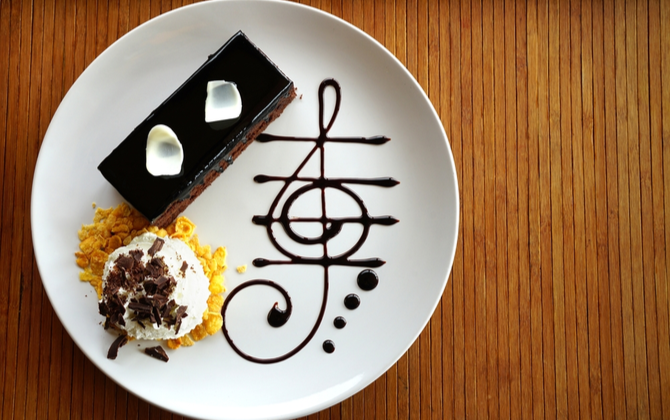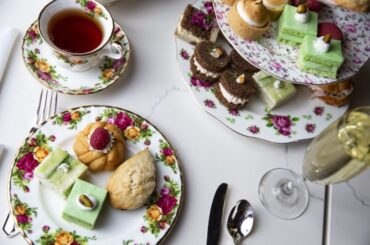Dipping in and out of various outdoor and indoor zones of Santa Monica’s Cloverfield, Carlos Alzaola leans on his sixth sense while surveying the scene at each place, and this tells the restaurant assistant general manager all he needs to know about what sounds the crowd needs to augment their dining experience subliminally.
Restaurants for the most part are still struggling post-pandemic and trying hard to devise strategies that will bring in new as well as returning customers. Dining out is essentially an experience that is meant to satisfy multiple senses, which is why restaurants spend so much money, time, and consideration when it comes to curating playlists. For many establishments, the playlist they put out can spell the difference between a single mimosa and an extensive brunch.
Experts’ Opinions of Music Vibes
Peter Veres, the MoonShack restaurant owner in Quebec, CA says the same. He is trying various music genres to keep his customers happy. ‘After all, its all about customer satisfaction and we are happy to do the best for them’, says Peter Veres.
Besides taking care of his regular managerial responsibilities, Alzaola puts aside an hour or so each day just for compiling lists comprising different styles and artists, based on the vibe that’s in the air. “Depending on if people are enjoying the moment, it tells me if I should switch over to another list or not,” he says, adding, “It really depends on the flow of the day. On Fridays, I love to play acid jazz, Herbie Hancock and John Scofield. People come in at the end of the week for a chill vibe at sunset. At brunch I let the kitchen pick the music. The servers get here real early and they want to listen to their music and it plays throughout the restaurant inside and out to help get them started. Then I’ll change it up again for the afternoon crowd. On weekends a lot of families come in and like to listen to familiar songs and many want to discover new music. It’s just a feeling. I want it to be ever-changing. Volume has a lot to do with it too, especially for the older clientele. They come in to dine and talk, it’s not Vegas or Miami. Then again, later at night after people have had a few drinks the vibe changes and so does the music and maybe the volume.”
Cuban-born and with close connections to Buena Vista Social Club, Alzaola has found that Latin Jazz is particularly liked on playlists in LA at this time. His tastes have a leaning towards acid jazz, hip hop, and bebop, mainly due to the fact that they blend well together. Most of his picks are instrumental or lyric-less because someone singing words can cause distractions in a restaurant. If he does pick something with lyrics though, he prefers Spanish, ensuring the background is soft and gentle.
“When I first got here everybody on the staff was coming to me with different suggestions, trying to take over the music,” he says, while busy whipping up an Aviation cocktail at the bar. “If you are really interested in music, you need to have knowledge of all different kinds of music. I’m more than happy to listen to suggestions, but if those names are always the same, it’s hard to get a good reaction out of that. I ask, ‘Listen, do you know who Duke Ellington is? Charlie Parker? Charles Mingus?” Those people are part of American culture and the ABC of any DJ and it’s important to know who they are. If you don’t recognize any of those names, you can’t be part of the process. The bar is pretty high here.”
Others such as Andrew Wintner, owner of Talea Tailored Music Solutions, recognize playlists as big business. Along with a team of curators, he works with hospitality groups such as The London Hotel, Viceroy Hotels, Toca Madera, Tocaya Organica, Lettuce Entertain You, Hotel Figueroa, and Sweetflower, the last one being the biggest owned multi-location cannabis store in Los Angeles. Tale recently finished a Mexico-based installation for a private resort that is attached to the Montage. Here, there are 40 music zones, which require as many unique concepts to be applied.
Wintner ascribes his expertise and knowledge to working with Rande Gerber, the famed hospitality guru. “Over the years as the streaming services come out, people are a lot more aware and opinionated about music than they used to be,” he says. “Everybody’s got a Spotify account to build their own playlists. People are paying more attention to it when they’re in restaurants – not just customers but restaurant owners, hoteliers and chefs. They are all aware of the impact the music has on the business.” With such levels of sophistication when it comes to the music tastes of the public, most of a new playlist has to do with discovering new music. “When I’m in a space that we are curating music for and I see customers raise their phone up to the speakers to Shazam a song, that’s just the biggest compliment you can get,” says Wintner. “That means they like it and they want to know what it is and plays a role in whether they come in again or order another Manhattan.”
The fine-tuning of the playlist creation process involves having conversations with and asking questions of clients. Maybe they’re in search of something that puts out energy, in turn driving up the purchase of food and beverage. At other times, clients look for discovery or familiar sounds. Some hotels that Talea works with have up to eight distinct concepts for a hotel, such as for two restaurants, the lobby bar, the pool, and the spa – each set needs its own music. Hotel Figueroa was looking for discovery-driven and cool music with good energy playing in the food and beverage outlets.
Talea says it’s completely about the senses. “People feel better when they are enjoying all of their senses,” he says, “You go to a restaurant and have a great meal, the food tastes good, you’re happy, the service is good, the design is visually interesting, the seats are comfortable. All those touchpoints – everything from the silverware to the napkins – it all matters.”

